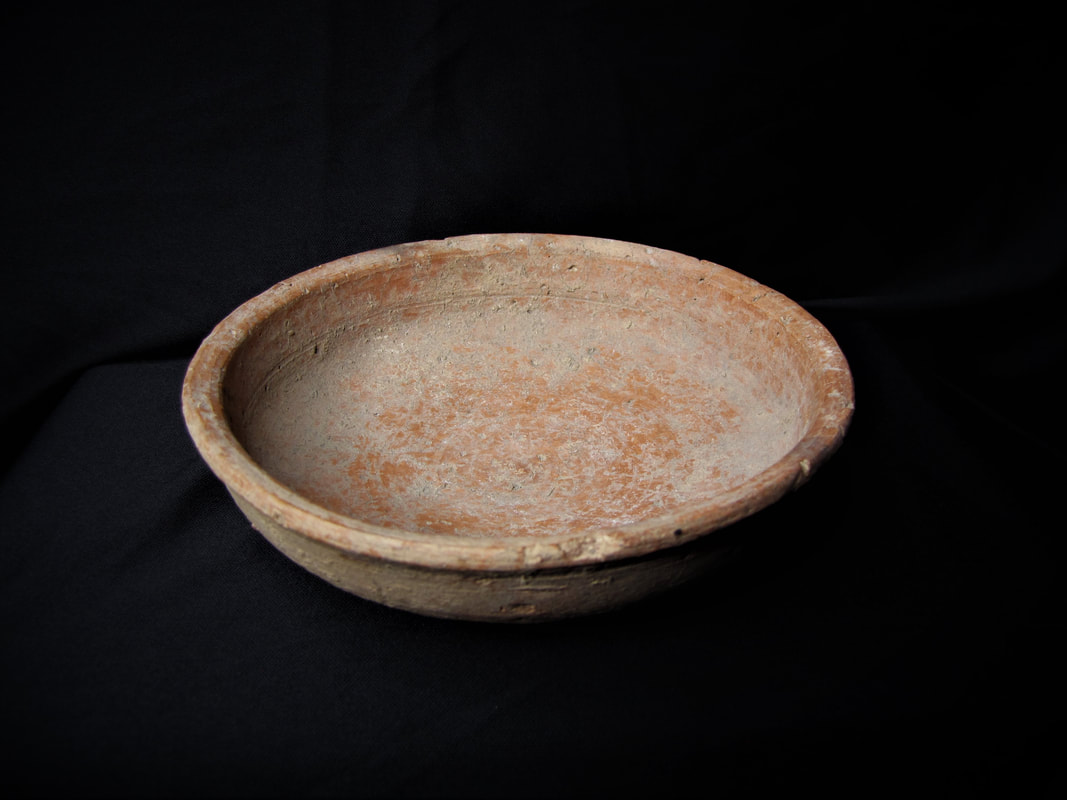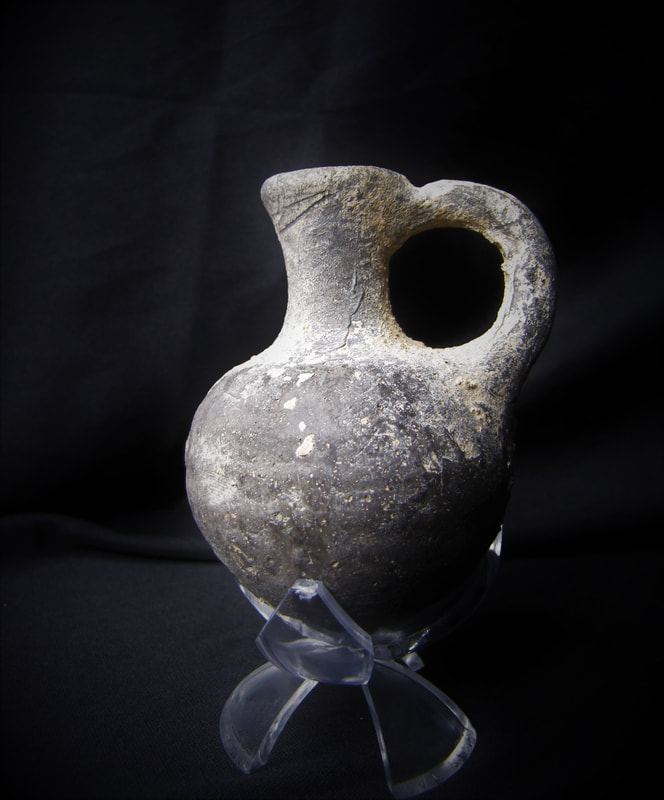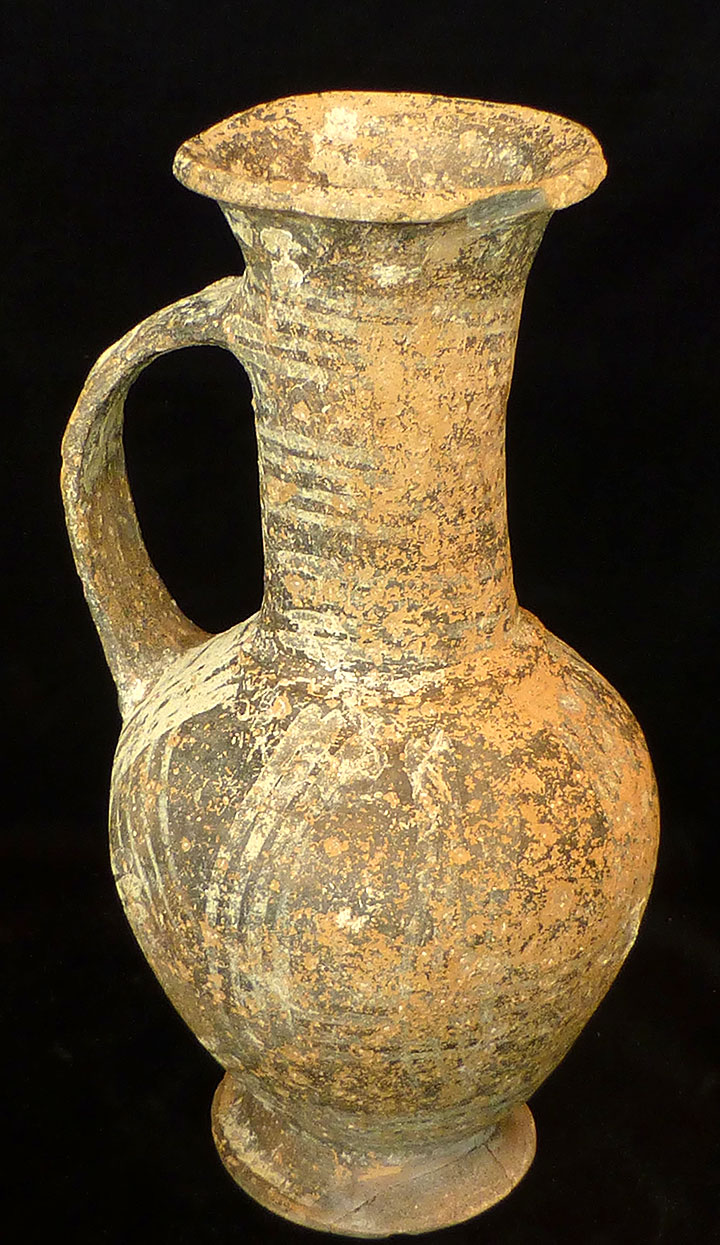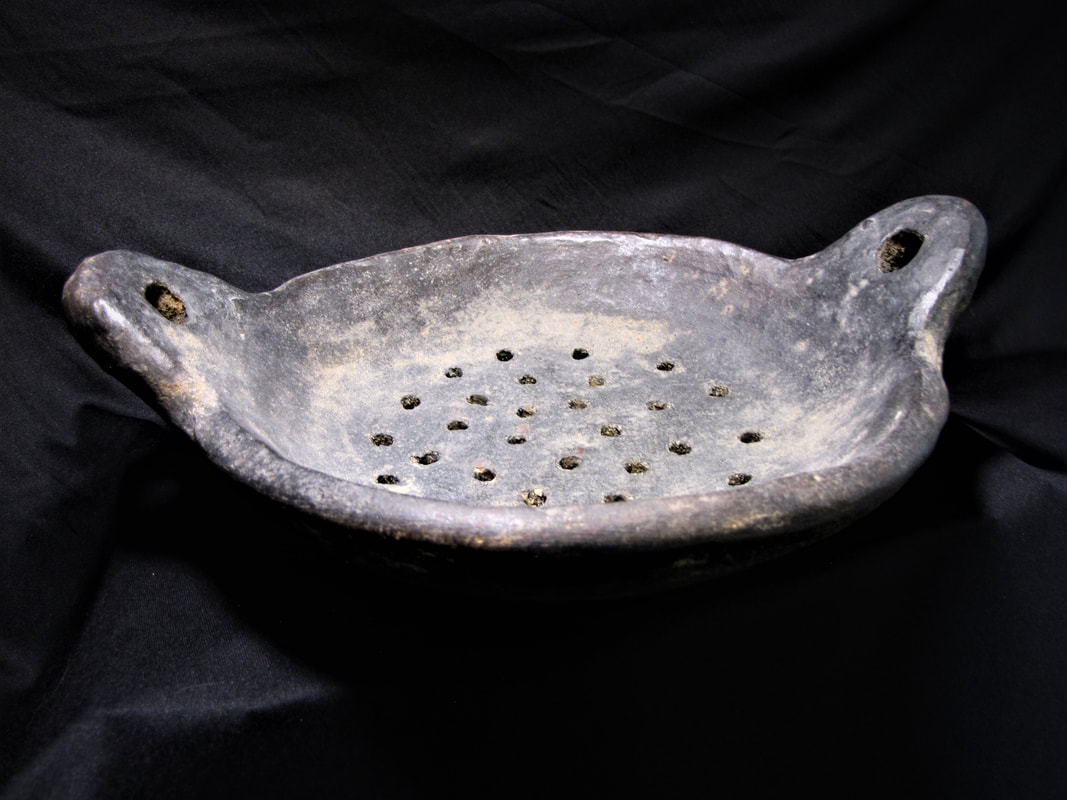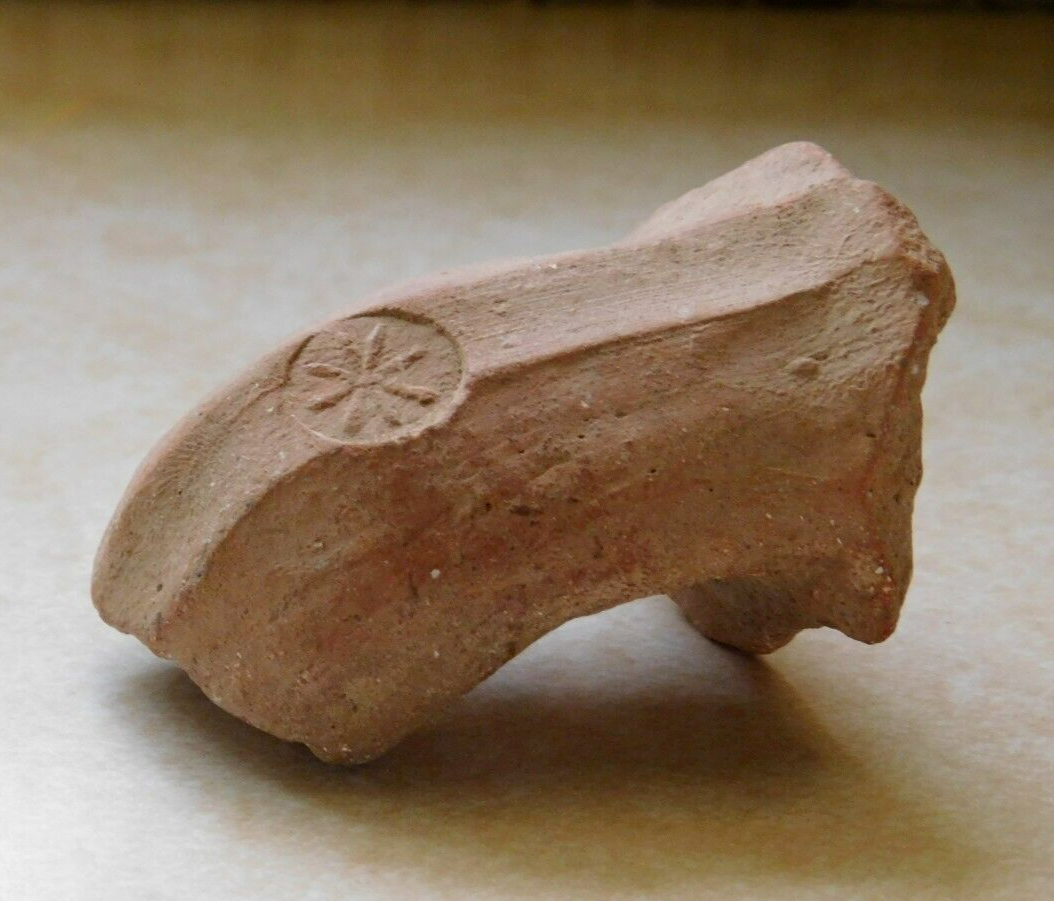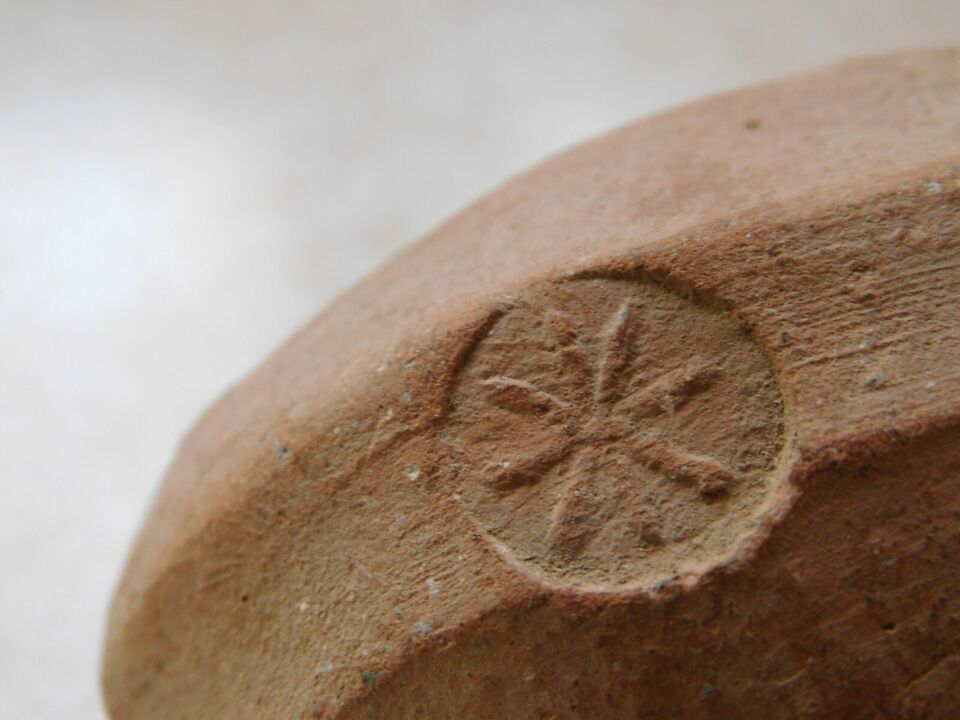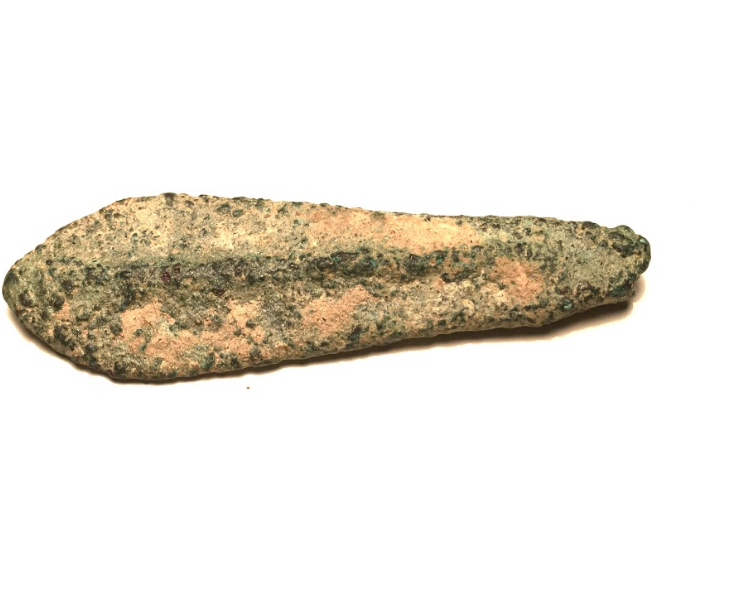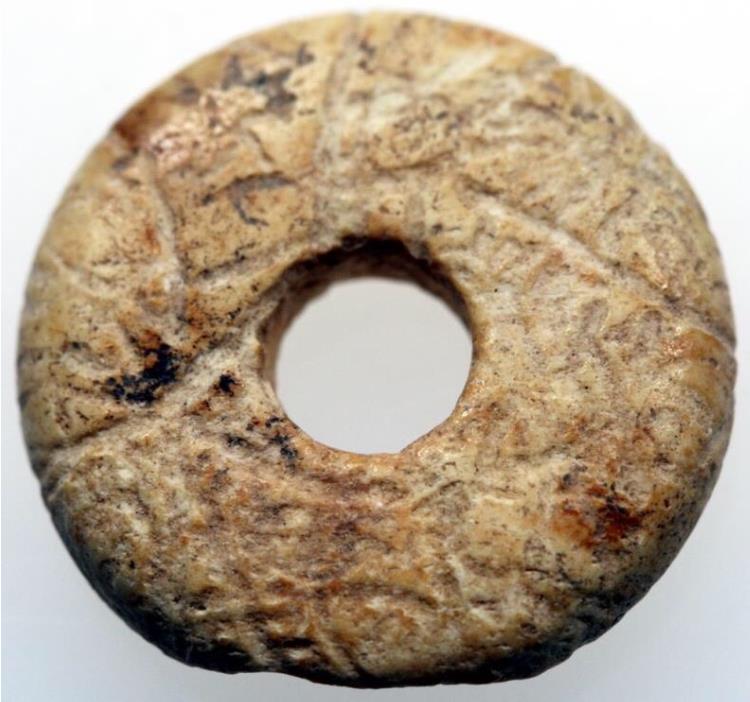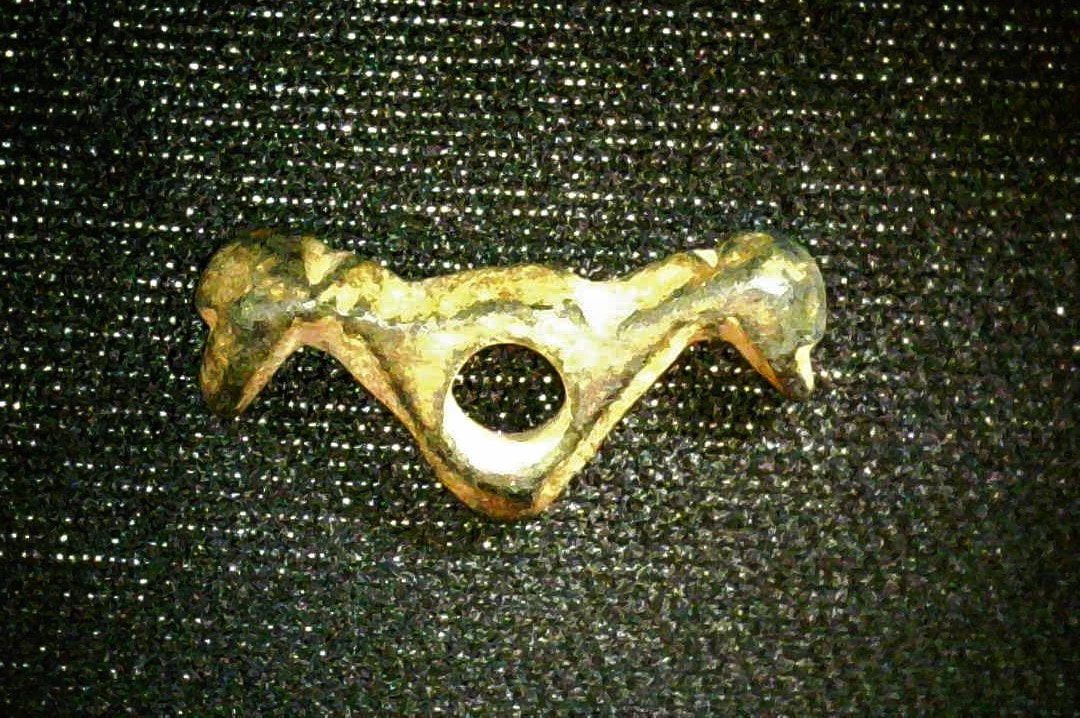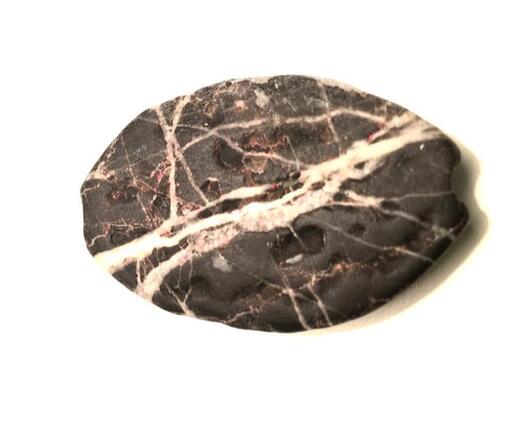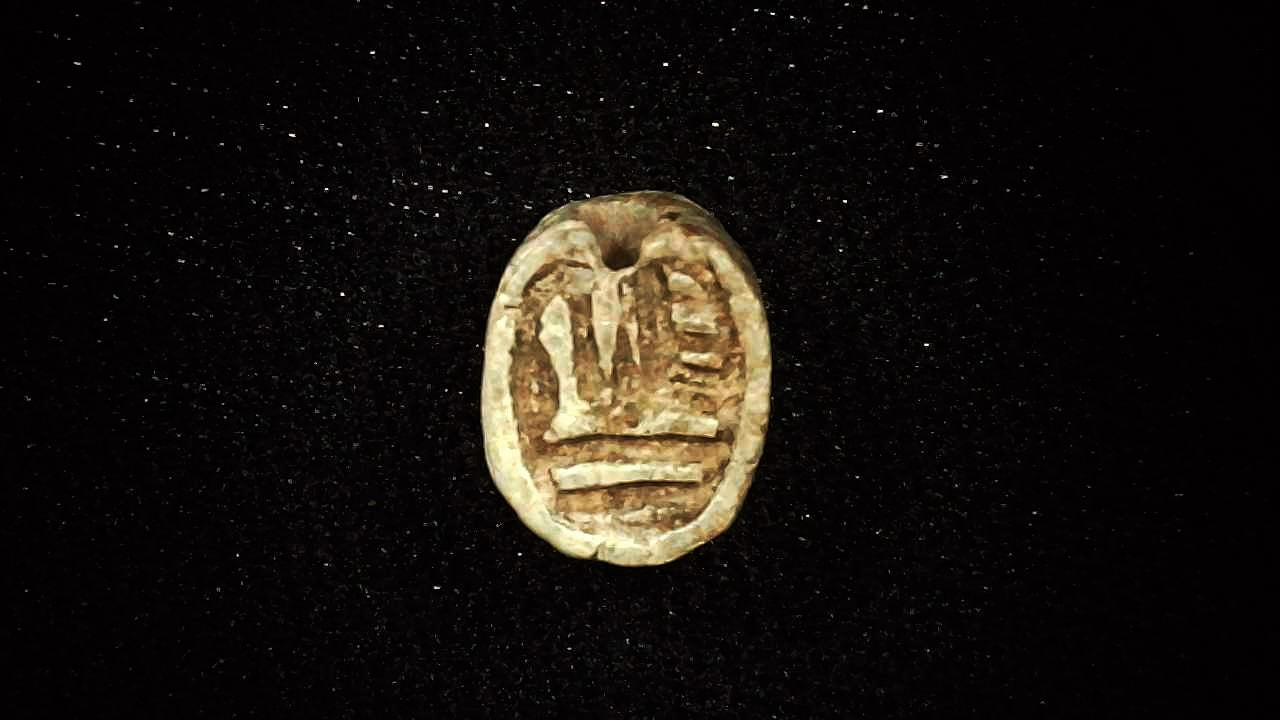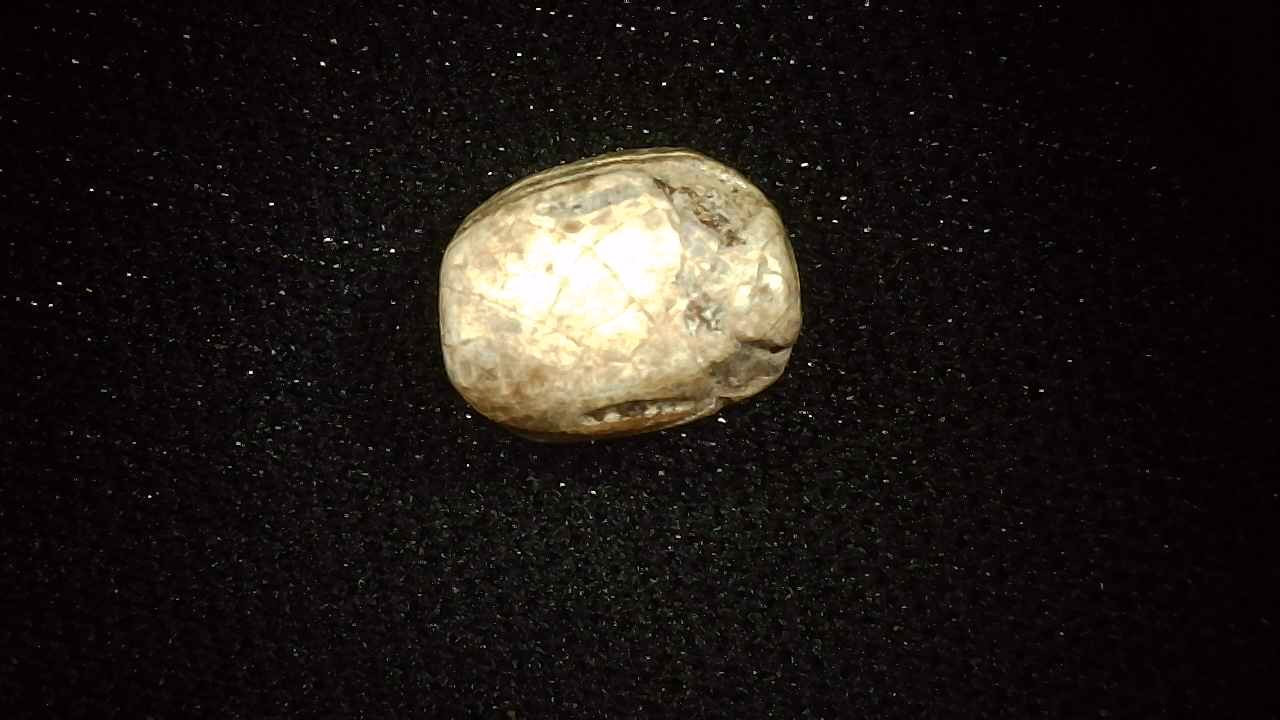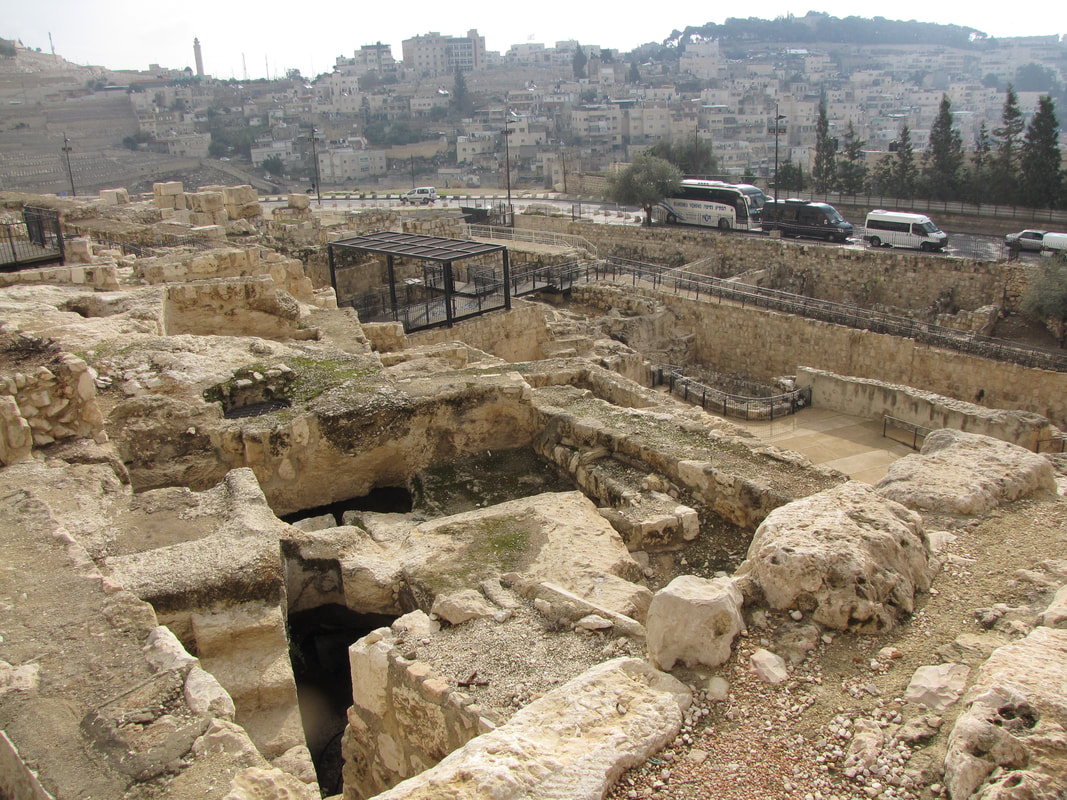The Iron Age
Like the Bronze Age, the Iron Age is typically broken down into different strata or levels. Given the relatively short time frame, here we will simply refer to items from 1100-600 BCE as stemming from the Iron Age.
The Iron Age was an era of massive growth for the Israelites, seeing the anointing of their first king, Saul. Following Saul, we have King David and Solomon. David was anointed king around 1055 BC, which would have placed his battle with Goliath approximately fifteen years prior. After Solomon's reign, the United Monarchy splits into Israel (The Northern Kingdom), and Judah (The Southern Kingdom). The Northern Kingdom was destroyed by the Assyrians in 722 BCE. In 586 BCE, the Southern Kingdom was fully conquered by the Babylonians after an extended siege. Isaiah, Ezekiel, and Daniel prophesied during the Iron Age.
The Iron Age was an era of massive growth for the Israelites, seeing the anointing of their first king, Saul. Following Saul, we have King David and Solomon. David was anointed king around 1055 BC, which would have placed his battle with Goliath approximately fifteen years prior. After Solomon's reign, the United Monarchy splits into Israel (The Northern Kingdom), and Judah (The Southern Kingdom). The Northern Kingdom was destroyed by the Assyrians in 722 BCE. In 586 BCE, the Southern Kingdom was fully conquered by the Babylonians after an extended siege. Isaiah, Ezekiel, and Daniel prophesied during the Iron Age.
Houseware
|
Type: Black Ware Jug
Age: 1000 BCE Era: Iron Age Culture: Israelite Excavated: Hebron Purchased: Bethlehem, Israel Hebron is a very important city, one of the oldest in Israel. The Bible states that Abraham lived in Hebron at one point and King David reigned from Hebron for the first seven years. This jar, theoretically, could have been used at the time of David's reign. |
|
Type: Cypriot Juglet (Bilbil)
Age: 1000 BCE Era: Late Bronze Age to Iron Age Culture: Cyprus Excavated: Israel Purchased: Edgar Owen Reference: Amiran, R. (1969) Ancient Pottery of the Holy Land. Photo 177, page 173. Reference: A near identical jar is also displayed at the Haifa Museum in Israel. Imported Cypriot ware (which was manufactured on the island of Cyprus) was very common in Canaan and Israel in the Bronze and Iron Age. In fact, it was a highly coveted type of pottery among wealthier members of society. My interest in Cypriot ware stems from a little archaeological disagreement. Dame Kathleen Kenyon and her team excavated the city of Jericho in the early 20th century. Her conclusion contradicted those of earlier excavator (Garstang). Garstang concluded that the archaeological data from Jericho supports the Biblical narrative, but Kenyon concluded otherwise. She made this conclusion partly on the absence of Cypriot ware which should have been abundant at the time of the Biblical destruction. Later excavator's did, in fact, find Cypriot ware in Jericho, among many other archaeological findings that support the Biblical narrative. |
|
Type: LMLK Jar Handle Rosette Style
Age: 800-586BCE Era: Iron Age Culture: Judea Excavated: Israel Purchased: Undisclosed Seller LMLK basically means "belonging to the king." These jars were typically used to store products from different regions that were used for taxation or levied products used to pay tribute to foreign rulers. The Rosette seal was started by King Jehoiakim and ended at the time of the Babylonian destruction of Judea in 587/586. The LMLK website has extensively cataloged these jar handles. This appears to be a Rosette type 4A. From the seller: – ROSETTE IMPRESSION, CLASS I-8, JAR HANDLE IMPRESSED WITH STAMP SEAL. IRON II C period (800 – 586 B.C.). Purchased in May 2023 from licensed Dealer in Israel. Possible fingerprint just below the rosette impression. Rosette impressions were introduced during the reign of Jehoiakim. “Each of the seven well-stratified rosette stamp seal impressions from the City of David can be dated on the basis of the accompanying pottery and artifacts to the final phase of the Iron Age II. The chronological peg to which these cultural assemblages may be linked is 587/6 BCE, the year in which the Babylonian army of Nebuchadnezzar destroyed the fortified cities of Azekah, Lachish and Jerusalem (Malamat 1968; Tadmor 1976:157). The six stratified impressions from Area G were all found in this destruction level and the vessels on which they were stamped all went out of use in 587/6 BCE” (Qedem 41 Cahill 2000: 98-99). “Well-stratified rosette impressions from other sites also derive exclusively from the destruction levels marking the end of the Iron Age II (Cahill 1995: 244-46). In addition to those from the City of David, 26 rosette-impressed handles have been found in well-stratified contexts at seven other sites (Cahill 1995: 245-46). Analysis of the stratigraphic settings of these rosette impressions suggests that they were introduced during the reign of Jehoiakim… (Cahill 1995:247-50). Although close to 250 rosette-impressed handles are known, none of the seals used to stamp them has yet been recovered” (Qedem 41 Cahill 2000: 99). |
Weapons
Seals and Amulets
Seals, were small etched items that worked much like a signature. These seals would be pressed into material such as clay or wax, leaving the impression behind. In ancient times, seals were used to authenticate a document, indicate possession of property (e.g. bread seals), indicate royal decree, etc.
Like today, amulets were small charms worn for protection.
Like today, amulets were small charms worn for protection.
|
Type: Proto-Syrian (Assyrian) Marbled Stone Stamp Seal with reported animal motif.
Age: 1000 BCE Era: Iron Age Culture: Assyrian Excavated: Unknown Purchased: Mark E. Reid Ed.D. A little about the Assyrian Empire in association with the Biblical text. The Assyrian Empire emerged as a powerful independent state in the late Bronze Age; around 1400 BCE. Several Assyrian leaders are mentioned in the Bible including Tiglath Pileser III, Shalmaneser V, Sargon II, Sennacherib, and Esarhaddon. Similarly, Israelite and Judahite kings are mentioned in the annals of the Assyrian Kings. For example, the Annals of Tiglath Pileser III, mentioned receiving tribute from King Johoahaz (Ahaz) of Judah. Sennacherib boasts of his destruction of the Northern Kingdom of Israel and several of the fortified cities in the Southern Kingdom of Judea. Hezekiah, the King of Judea, was reigning from Jerusalem at this time. Concerned about Sennacherib's threats, he sought the Word of the Lord through Isaiah the Prophet. The LORD told Isaiah that Sennacherib would NOT overtake Jerusalem (See Biblical reference below). This is alluded to in Sennacherib's own Annals. He states..."As to Hezekiah, the Jew, he did not submit to my yoke, I laid siege to 46 of his strong cities, walled forts and to the countless small villages in their vicinity, and conquered (them) by means of well-stamped (earth-)ramps, and battering-rams brought (thus) near (to the walls) (combined with) the attack by foot soldiers, (using) mines, breeches as well as sapper work. I drove out (of them) 200, 150 people, young and old, male and female, horses, mules, donkeys, camels, big and small cattle beyond counting, and considered (them) booty. Himself I made a prisoner in Jerusalem, his royal residence, like a bird in a cage. I surrounded him with earthwork in order to molest those who were leaving his city’s gate." ANET: Page 288 Sennacherib never says he conquered Jerusalem, even after the siege. 32 ‘Therefore this is what the Lord says about the king of Assyria: “He will not come to this city nor shoot an arrow there; and he will not come before it with a shield nor heap up an assault ramp against it. 33 By the way that he came, by the same he will return, and he shall not come to this city,”’ declares the Lord. 34 ‘For I will protect this city to save it for My own sake, and for My servant David’s sake.’” 35 Then it happened that night that the angel of the Lord went out and struck 185,000 in the camp of the Assyrians; and when the rest got up early in the morning, behold, all of the 185,000 were dead. 36 So Sennacherib the king of Assyria departed and returned home, and lived at Nineveh. 2 Kings 19:32-36 NASB ANET : Ancient Near Eastern Texts Relating to the Old Testament. Third Edition with Supplement. Ed. James B. Pritchard. Princeton: Princeton Univ. Press, 1969 |
Did you know?
Did you know that a bulla from Isaiah the Prophet has been found in excavations in Israel. Although some deny that the bulla reads "Isaiah the Prophet", many disagree. Secondly, Isaiah's seal was found just feet away from a bulla from King Hezekiah's seal; the king with whom Isaiah had a very close relationship. Both bulla were excavated by Eilat Mazar in the City of David Excavations in the Ophel of Jerusalem, Israel. A bulla is the hardened clay which the seal was pressed into, leaving the impression.
Hezekiah Bulla
Please click on the link here to read about and see a photograph of the Hezekiah Bulla.
The Bulla reads: Hezekiah, [son of] Ahaz, King of Judah.
This is NOT part of my collection.
Click here to read and see photographs of the Isaiah Bulla.
The top register, which is broken is thought to depict a deer grazing; a common motif of this era. The second line reads "Belonging to Isaiah." Notice that a finger print can be found on the left side of the bottom register which is possibly obscuring the Hebrew letter Yod. The word Prophet, in Ancient Hebrew would be spelled NVY' (the apostrophe representing the Yod). Here we only have the NVY visible. It is this issue that has caused some scholars to question if this is an impression of Isaiah's actual seal. Most scholars have accepted that this is Isaiah's seal impression. Remember, it was found just feet away from the King Hezekiah Bulla.
This is NOT part of my collection.
In those days Hezekiah became mortally ill, And Isaiah the prophet, the son of Amoz, came to him and said to him, “This is what the Lord says: ‘Set your house in order, for you are going to die and not live.’”
Isaiah 38:1
Hezekiah Bulla
Please click on the link here to read about and see a photograph of the Hezekiah Bulla.
The Bulla reads: Hezekiah, [son of] Ahaz, King of Judah.
This is NOT part of my collection.
Click here to read and see photographs of the Isaiah Bulla.
The top register, which is broken is thought to depict a deer grazing; a common motif of this era. The second line reads "Belonging to Isaiah." Notice that a finger print can be found on the left side of the bottom register which is possibly obscuring the Hebrew letter Yod. The word Prophet, in Ancient Hebrew would be spelled NVY' (the apostrophe representing the Yod). Here we only have the NVY visible. It is this issue that has caused some scholars to question if this is an impression of Isaiah's actual seal. Most scholars have accepted that this is Isaiah's seal impression. Remember, it was found just feet away from the King Hezekiah Bulla.
This is NOT part of my collection.
In those days Hezekiah became mortally ill, And Isaiah the prophet, the son of Amoz, came to him and said to him, “This is what the Lord says: ‘Set your house in order, for you are going to die and not live.’”
Isaiah 38:1
This is a photo of the Ophel in Jerusalem.
